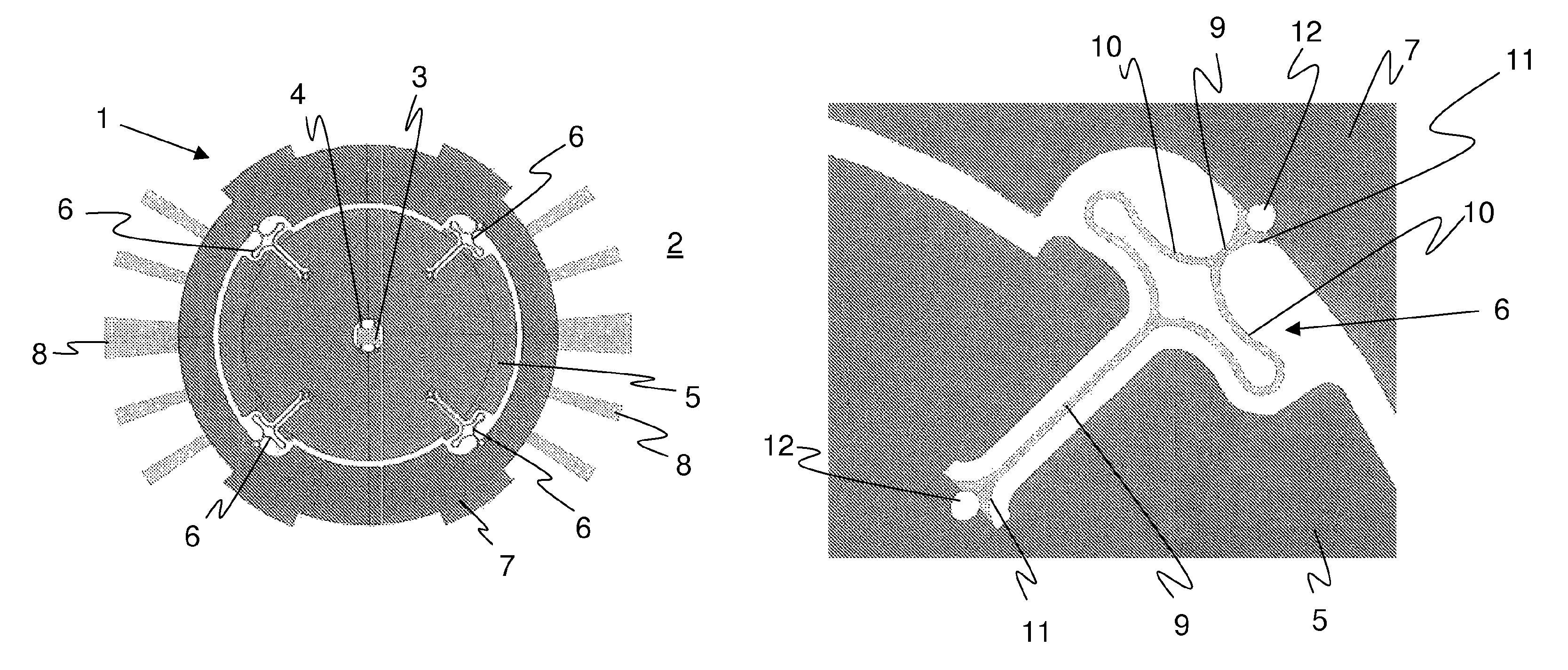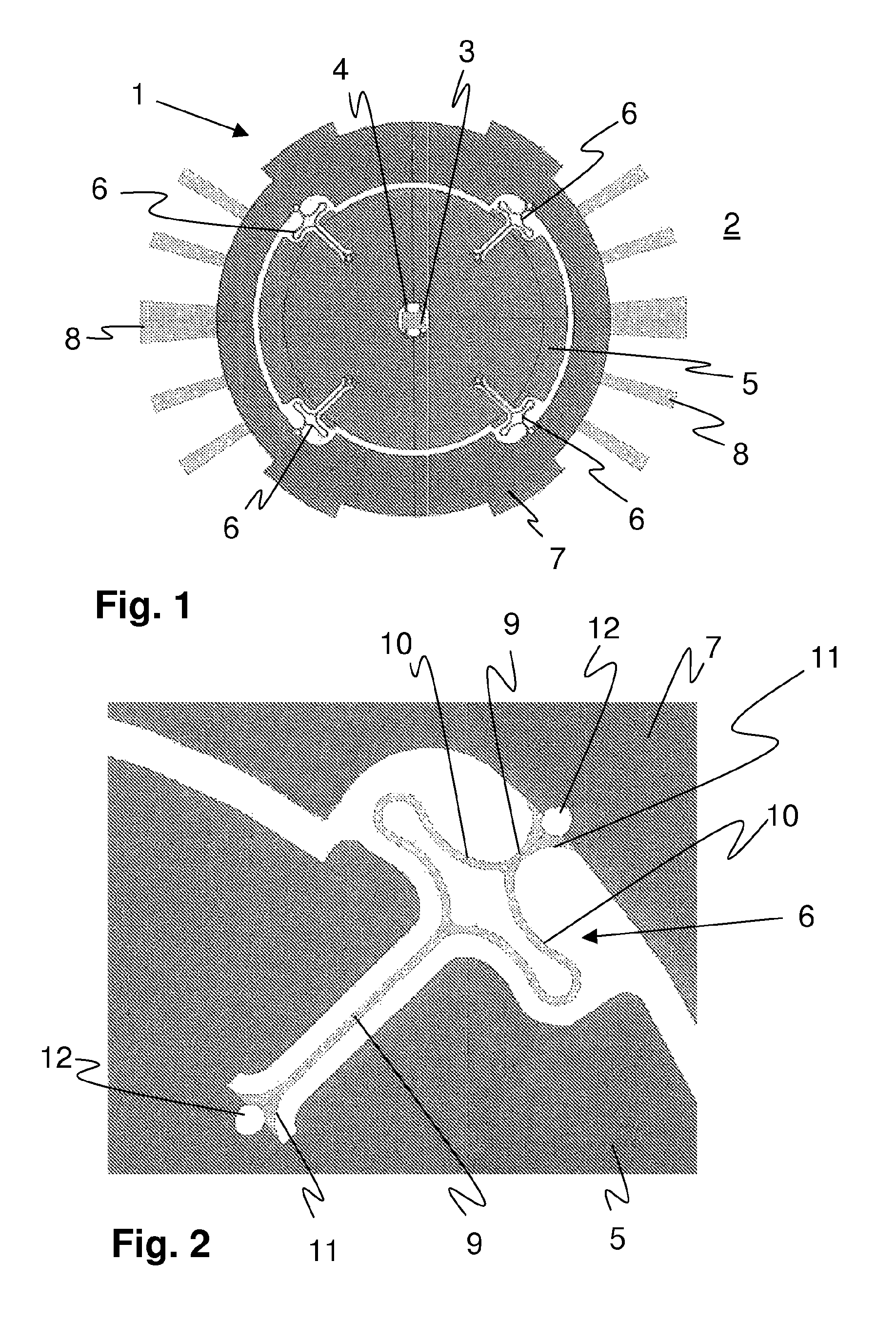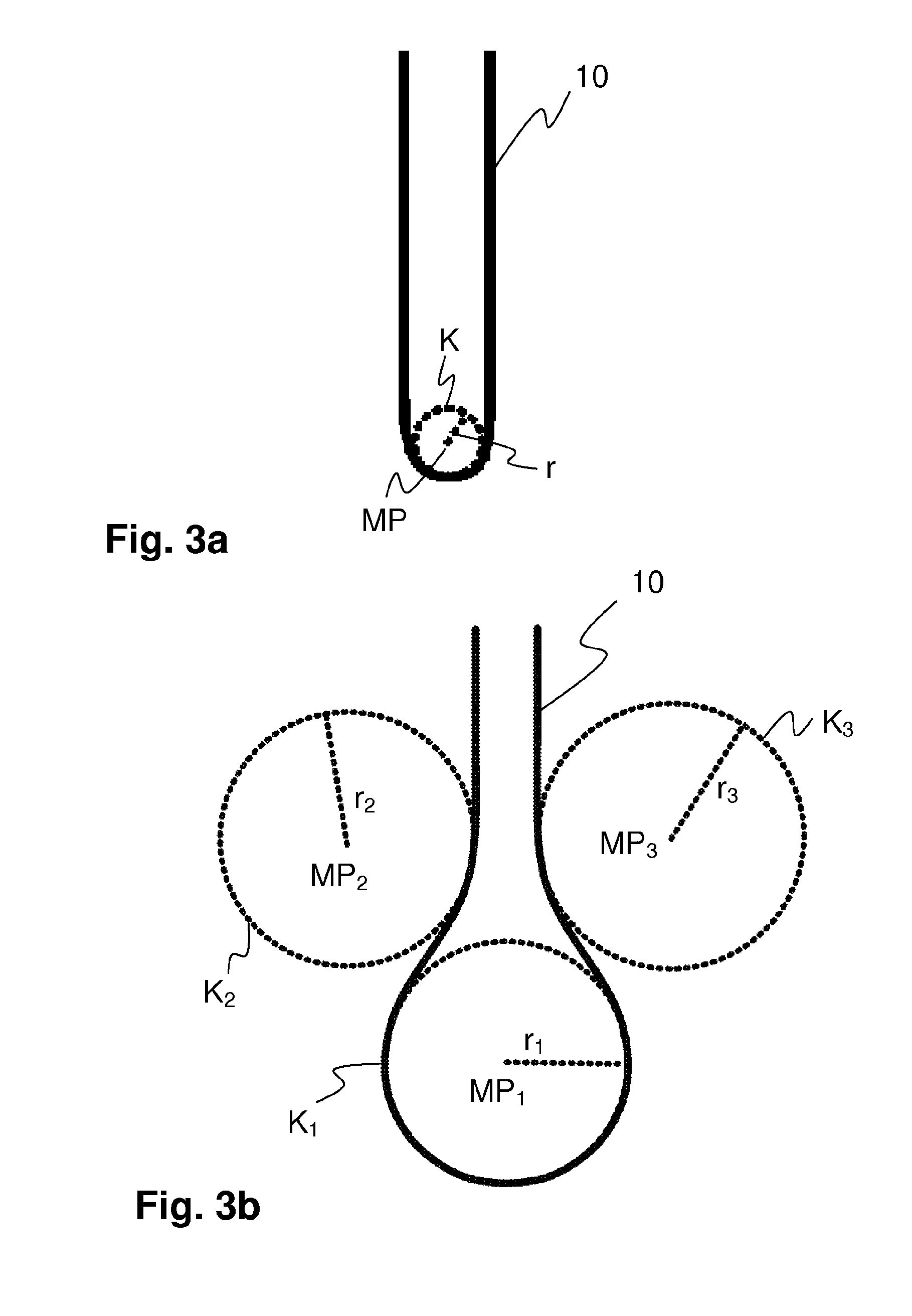Micromechanical sensor
a sensor and micro-mechanical technology, applied in the direction of turning-sensitive devices, acceleration measurement using interia forces, instruments, etc., can solve the problems of relatively high peak stress of bending spring devices, spring damage, and damage to springs, so as to reduce stress peaks, avoid high bending rates, and reduce stress peaks
- Summary
- Abstract
- Description
- Claims
- Application Information
AI Technical Summary
Benefits of technology
Problems solved by technology
Method used
Image
Examples
Embodiment Construction
[0030]FIG. 1 shows a top view of a sensor 1 according to the invention, in the present case, a yaw rate sensor for detecting rotations of the sensor 1 about an axis. An anchoring 3 is situated on a substrate 2 of the sensor 1, and a sensor mass 5 is rotatably fastened to the anchoring by means of four springs 4. The sensor mass 5 is connected to the drive mass 7 by means of a bending spring device 6. Four of the bending spring devices 6 are uniformly distributed at the periphery of the sensor mass 5. The drive mass 7, by means of electrodes 8 attached thereto, is to be set in a primary motion in which it vibrates in an oscillating manner about the z axis which projects out of the plane of the drawing. This primary motion is completed almost exclusively by the drive mass 7, and does not continue on the sensor mass 5. Thus, the sensor mass 5 does not take part in the primary motion of the drive mass 7. If the substrate 2, i.e., the sensor 1, then rotates about an x or y axis situated ...
PUM
 Login to View More
Login to View More Abstract
Description
Claims
Application Information
 Login to View More
Login to View More - R&D
- Intellectual Property
- Life Sciences
- Materials
- Tech Scout
- Unparalleled Data Quality
- Higher Quality Content
- 60% Fewer Hallucinations
Browse by: Latest US Patents, China's latest patents, Technical Efficacy Thesaurus, Application Domain, Technology Topic, Popular Technical Reports.
© 2025 PatSnap. All rights reserved.Legal|Privacy policy|Modern Slavery Act Transparency Statement|Sitemap|About US| Contact US: help@patsnap.com



